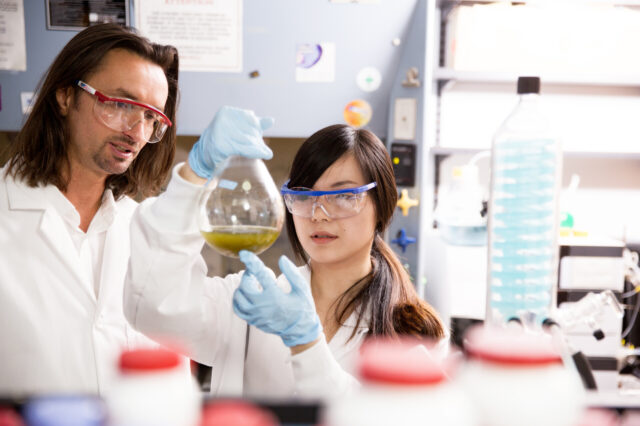Novel drug inspired by a marine natural product offers new approach to treat pancreatic cancer

A novel drug candidate based on a marine natural product discovered 20 years ago could be the basis for a new approach to treating pancreatic cancer, according to University of Florida researchers, who are continuing to evaluate it.
Less than 20 percent of pancreatic cancer patients live a full year after diagnosis. By 2030, pancreatic cancer is expected to become the second-leading cause of cancer-related deaths in the United States, surpassing breast cancer in women and prostate cancer in men.
“Pancreatic cancer is an aggressive disease and our therapies to date are mostly ineffective,” said Jose Trevino, M.D., an assistant professor of surgery in the UF College of Medicine, part of UF Health, the university’s academic health center. “It is a hard disease to tackle because it is a silent killer. By the time symptoms present, the cancer has most likely spread to another organ system. We need new strategies to combat the disease.”
UF College of Pharmacy researchers recently developed a novel molecule based on marine cyanobacteria, Apra S10, to target pancreatic cancer cells. In laboratory testing, Apra S10 inhibited the growth of pancreatic cancer cells derived from patients and maintained high concentrations in the pancreas compared with other organs.
The pancreas is surrounded by stromal cells that often act as a barrier preventing cancer drugs from targeting a tumor. These cells impair drug delivery and secrete substances that stimulate tumor growth. The protective barrier has frustrated cancer researchers trying to target pancreatic tumors with new drugs, since they do not effectively reach the cancer cells.
“We have shown initially that our drug goes to the pancreas, which is rare,” said Hendrik Luesch, Ph.D., a professor and chair of medicinal chemistry and the Debbie and Sylvia DeSantis Chair in Natural Products Drug Discovery and Development in the UF College of Pharmacy.
Apra S10 originates from a family of molecules known as apratoxins, found in select areas of the Pacific Ocean near Micronesia. Luesch discovered the original compound off the coast of Guam two decades ago and years of medicinal chemistry refinements have yielded several potential cancer therapies, including Apra S10.
In recent years, UF researchers identified the compound’s mechanism of action and how it acts in stopping the growth of cancer cells. Apratoxin-derived molecules deliver a “one-two punch” by inhibiting the tumor cell’s receptors and the growth factors that act on them. The compound preferentially targets secretory organs by inhibiting pathways conducive to tumor growth. Since the primary role of the pancreas is to secrete hormones and digestive enzymes, Luesch said it made sense to target pancreatic cancer.
UF researchers initially evaluated Apra S10 using established cancer cell lines grown in a laboratory and subsequently in primary patient-derived cancer cells, where the compound showed potent activity. Additionally, Luesch found that Apra S10 effectively inhibited the secretion of growth factors from stromal cells, thereby simultaneously targeting a mechanism of resistance. The compound was then tested in a novel animal model, called PDX.
“PDX is the most representative model for human pancreatic cancer and allows for testing therapies on a personalized level,” Trevino said. “We are able to surgically resect a patient’s tumor in the operating room, while it is still alive, and implant it into the pancreas of a mouse. This allows for personalized observations on tumor behavior and responses to therapies that are currently available. The tumor will grow and spread in an environment which mimics a human pancreatic cancer.”
Researchers treated the mice with Apra S10, resulting in a decrease in tumor growth and a reduction in cellular proliferation in the tumor.
“To our knowledge, this is the first study of apratoxin-derived molecules in a PDX model,” Luesch said. “Using this novel model to test a novel drug that has a novel mechanism of action has led us for the first time to a potentially effective treatment for pancreatic cancer. We look forward to testing Apra S10 in combination with existing therapies and eventually advance the drug into human clinical trials.”
The worldwide commercial rights to the apratoxin family of molecules are exclusively licensed to Oceanyx Pharmaceuticals Inc., a novel drug discovery and development company that leverages marine biology-based, natural-product research.
About the author
